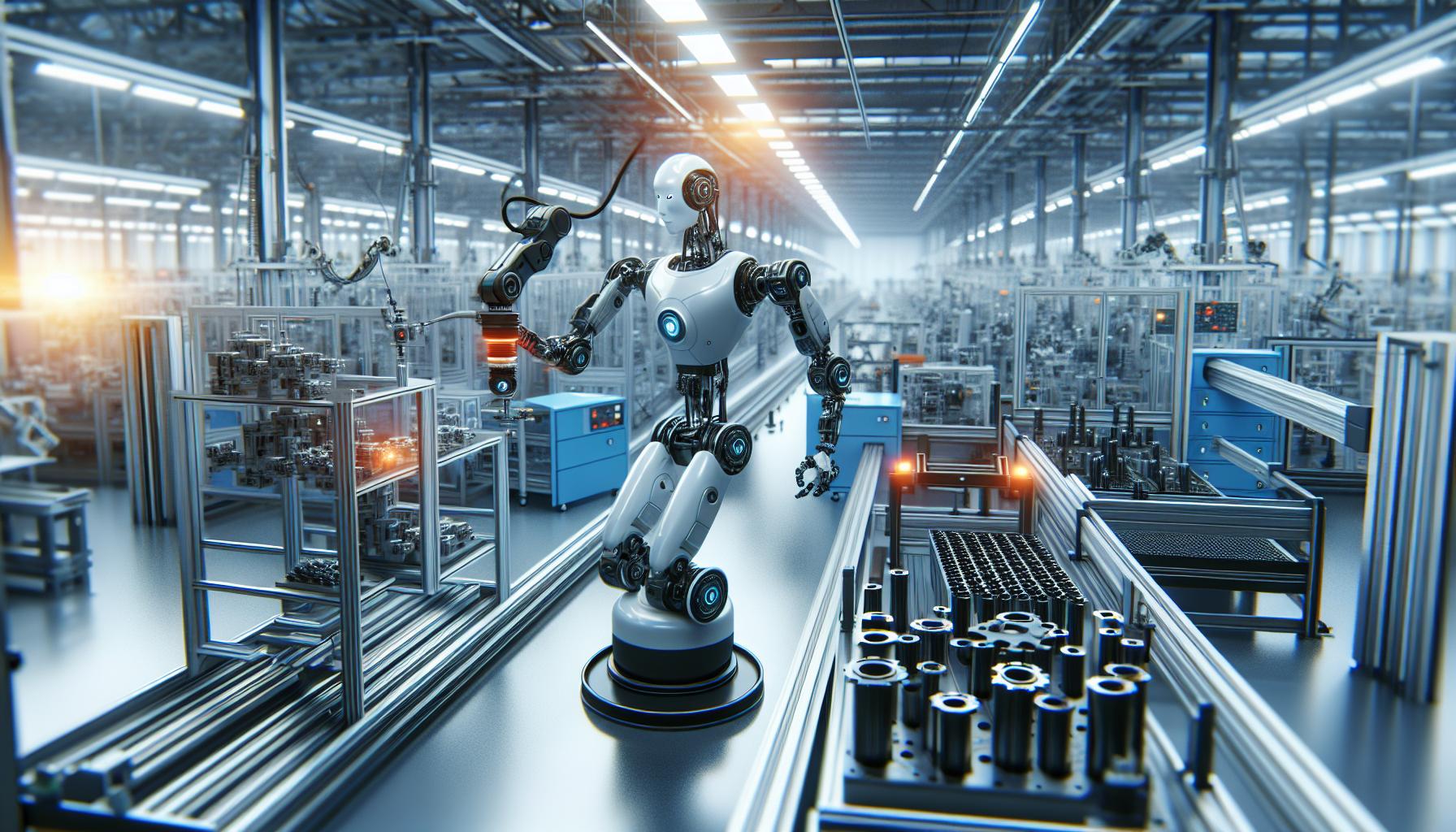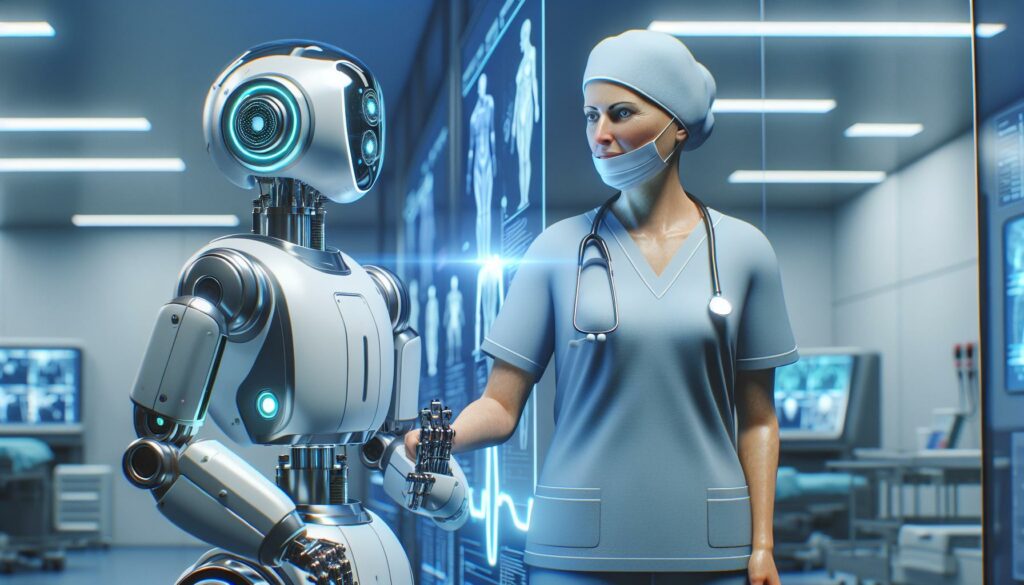In a world where technology is evolving at lightning speed, reflex robotics stands out as a game-changer. These innovative systems mimic the natural reflexes of living organisms, allowing robots to respond to their environment with astonishing speed and accuracy. I’ve always been fascinated by how these machines can adapt in real-time, enhancing their capabilities in various applications from manufacturing to healthcare.
As I dive deeper into the realm of reflex robotics, I’m excited to explore how they’re transforming industries and reshaping our understanding of automation. With advancements in artificial intelligence and sensor technology, these robots not only perform tasks but also learn and improve over time. Join me as I uncover the incredible potential of reflex robotics and the future they promise for our increasingly automated world.
Key Takeaways
- Rapid Adaptation: Reflex robotics excel in adjusting their actions based on real-time environmental feedback, promoting flexibility in dynamic settings.
- Precision Performance: With high levels of accuracy, these robots are vital in critical sectors like healthcare and manufacturing, minimizing errors that could lead to severe consequences.
- Learning Capabilities: Equipped with machine learning, reflex robots continuously enhance their performance, refining their responses through experience.
- Diverse Applications: Reflex robotics revolutionize various industries, from industrial automation to healthcare, improving efficiency and response times significantly.
- Challenges Ahead: Key limitations include sensor reliability in extreme conditions, high implementation costs, and ethical concerns surrounding decision-making capabilities.
Reflex Robotics
Reflex robotics represent an innovative field within robotics, focusing on mimicking the natural reflexes found in living organisms. These systems enable swift and accurate responses to environmental stimuli, enhancing overall efficiency in various applications. Reflex robots utilize advanced algorithms and artificial intelligence to interpret data from multiple sensors, allowing them to react in real-time.
Key characteristics of reflex robotics include:
- Rapid Adaptation: Reflex robots can adjust their actions based on immediate feedback from their surroundings, providing flexibility in dynamic environments.
- Precision Performance: These systems achieve high levels of accuracy, which is crucial in sectors such as healthcare and manufacturing, where even minor errors can have significant consequences.
- Learning Capabilities: Reflex robots possess machine learning features that allow them to improve performance through experience, continuously refining their responses to specific situations.
Reflex robotics find applications in diverse fields, including:
- Industrial Automation: In manufacturing, reflex robots optimize assembly lines by quickly adapting to changes in production requirements.
- Healthcare: These robots assist in surgeries or provide support in rehabilitation, responding promptly to patient needs.
- Defense: Reflex robots enhance military operations by improving response rates in critical situations.
The integration of refined sensors and AI technology significantly elevates the capabilities of reflex robotics, driving advancements across various industries. This evolving technology showcases the potential for creating highly responsive systems that redefine automation.
Key Technologies In Reflex Robotics

Reflex robotics rely on several key technologies that enable their advanced functionality and adaptability. These technologies play a crucial role in their effectiveness in real-time environments.
Sensors And Actuators
Sensors and actuators form the backbone of reflex robotics, facilitating interaction with the environment.
- Sensors detect changes in the surroundings, such as light, temperature, and motion. Common types include optical sensors, thermal sensors, and ultrasonic sensors. Each type provides crucial data for making immediate adjustments.
- Actuators convert sensor data into physical movement. They are responsible for executing rapid responses when stimuli are detected. Common actuator types include electric motors, pneumatic actuators, and hydraulic actuators, each offering varying degrees of speed and precision.
With this combination, reflex robots can interpret environmental cues and react almost instantaneously, enhancing their operational efficiency.
Machine Learning Algorithms
Machine learning algorithms significantly enhance the learning capabilities of reflex robotics, allowing them to improve through experience.
- Supervised learning uses labeled datasets to teach robots how to recognize patterns and make decisions based on prior data. This approach helps refine reflex actions over time.
- Reinforcement learning focuses on rewarding desired behaviors, enabling robots to discover effective strategies through trial and error. This adaptability leads to more efficient responses in dynamic environments.
- Neural networks assist in processing complex data inputs, allowing robots to better interpret sensor data for quicker reflex actions.
These algorithms enable reflex robotics to continuously learn and adjust their performance, making them invaluable in industries like manufacturing and healthcare.
Applications Of Reflex Robotics

Reflex robotics revolutionizes several industries by delivering adaptive solutions. Their advanced capabilities enhance efficiency and safety in diverse applications.
Industrial Automation
Reflex robotics optimize manufacturing processes through real-time responsiveness. These systems handle material handling tasks, machine tending, and quality control, ensuring minimal downtime. In assembly lines, robots adjust to variations in components, boosting productivity. Their rapid reaction to faults improves safety, reducing the risk of accidents. By using reflexive capabilities, industries can streamline operations and respond swiftly to changes in production schedules.
Healthcare Solutions
Reflex robotics play a crucial role in healthcare environments, enhancing patient care and surgical procedures. Surgical robots utilize reflexive actions for precision during operations, reducing recovery times for patients. In rehabilitation, these robots adapt to patients’ movements, providing tailored therapy. They assist caregivers by monitoring vital signs and responding to emergencies in real-time. Reflex robotics thus transform healthcare into a more responsive and efficient system, ultimately improving patient outcomes.
Benefits Of Reflex Robotics

Reflex robotics offer significant advantages across various industries. Integration of these robots streamlines operations and enhances efficiency.
- Rapid Response: Reflex robotics respond instantly to environmental stimuli. This capability is particularly beneficial in high-stakes situations, such as emergency healthcare or manufacturing hazards, where timely actions can save lives and prevent accidents.
- Improved Precision: These robots execute tasks with high accuracy. In healthcare settings, they perform delicate surgeries and administer medication precisely, reducing the likelihood of human error and improving patient outcomes.
- Increased Adaptability: Reflex robotics adapt to changing conditions autonomously. This adaptability allows them to function effectively in dynamic environments, like factories or hospitals, where situations can shift rapidly.
- Enhanced Productivity: By automating repetitive tasks, reflex robotics free up human workers for more complex responsibilities. In manufacturing, they handle material movement and quality checks, boosting overall productivity and operational safety.
- Continuous Learning: Machine learning algorithms equip reflex robotics with the ability to learn from their experiences. Over time, they refine their functions, improving their performance and enhancing their effectiveness in various applications.
- Cost Efficiency: Implementing reflex robotics reduces operational costs associated with labor and errors. Their ability to maintain consistent performance without the need for breaks leads to lower overhead costs and improved profit margins.
- Diverse Applications: Reflex robotics serve various sectors, including defense and agriculture. Their versatility enables them to tackle complex tasks, maximizing their value across different industries.
These benefits underline the transformative potential of reflex robotics, making them an invaluable asset in enhancing operational capabilities and improving overall efficiency.
Challenges And Limitations
Reflex robotics face several challenges and limitations that can impact their effectiveness and reliability. I’ve identified key areas requiring attention:
- Sensor Limitations: Sensors may struggle in extreme environmental conditions, such as high temperatures or low visibility. Their performance can degrade, leading to inaccurate data collection.
- Data Processing Constraints: Complex algorithms can require significant processing power. This limitation may slow down response times, affecting overall performance in critical situations.
- Adaptability Issues: While reflex robots can adapt to various stimuli, unforeseen situations may cause them to malfunction. Their systems may not always handle novel circumstances effectively.
- Cost of Implementation: Developing and deploying these advanced systems can be expensive. Initial investments in technology and training can be prohibitive for smaller enterprises.
- Ethical Concerns: The use of reflex robotics in sensitive areas, such as healthcare, raises ethical questions. Concerns about decision-making in emergencies and the reliability of robotic interventions remain.
- Dependence on Data Quality: The learning capabilities of these robots depend heavily on the quality of input data. Poor-quality data can lead to ineffective learning and suboptimal performance.
- Interoperability Challenges: Integrating reflex robotics with existing systems and technologies may pose challenges. Compatibility issues can hinder their deployment and operational efficiency.
Addressing these challenges is crucial for the further development and successful integration of reflex robotics across various sectors.
Future Trends In Reflex Robotics
I see several trends shaping the future of reflex robotics. Increased integration of artificial intelligence will enhance decision-making capabilities. This integration allows reflex robots to analyze complex datasets, enabling them to make informed choices quickly.
I observe advancements in sensor technology leading to improved environmental awareness. Enhanced sensors will facilitate better detection of dynamic changes, empowering robots to react with greater precision. For instance, high-resolution cameras and advanced pressure sensors will provide richer data, resulting in better environmental interaction.
I expect more collaboration between humans and reflex robots. Developments in human-robot interfaces will foster seamless interaction in workplace environments. These advancements will ensure that reflex robots work safely and effectively alongside human workers, boosting productivity and safety.
I note that energy efficiency gains will play a vital role in the future of reflex robotics. Innovations in battery technology and energy management systems will extend operational times. This enhancement will reduce the need for frequent recharges, allowing robots to operate longer and more efficiently in various settings.
I anticipate the emergence of specialized reflex robots for niche applications. As industries recognize the unique capabilities of reflex robotics, tailored designs will address specific needs. For example, reflex robots in agriculture may focus on optimizing crop monitoring and pest control.
I recognize that ethical considerations will increasingly influence the development of reflex robotics. As these robots assume more responsibilities, establishing guidelines for their use in sensitive applications will become essential. Stakeholders must prioritize safety and transparency in their deployment.
I find that collaboration among researchers, developers, and industry leaders will drive the evolution of reflex robotics. Sharing knowledge and resources will spur innovation and accelerate the integration of these systems into everyday applications. Through partnerships, the potential for reflex robotics to revolutionize industries will increase significantly.
I emphasize that these trends position reflex robotics at the forefront of technological advancement. As these systems evolve, they’ll play a crucial role in shaping the future of automation across multiple sectors.
Artificial Intelligence
Reflex robotics is truly transforming the landscape of automation and artificial intelligence. Their ability to respond rapidly and adapt to changing environments opens up new possibilities across various industries. I’m particularly excited about how these robots enhance efficiency in manufacturing and improve patient care in healthcare settings.
As technology continues to advance I believe we’ll see even more innovative applications emerge. The challenges facing reflex robotics are significant but not insurmountable. With ongoing collaboration among experts and a focus on ethical considerations we can harness the full potential of these remarkable systems. The future looks bright for reflex robotics and I can’t wait to see how they evolve.



